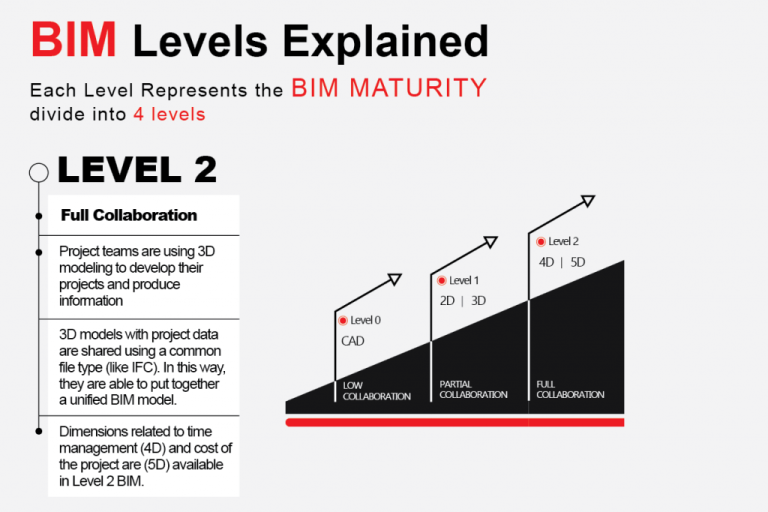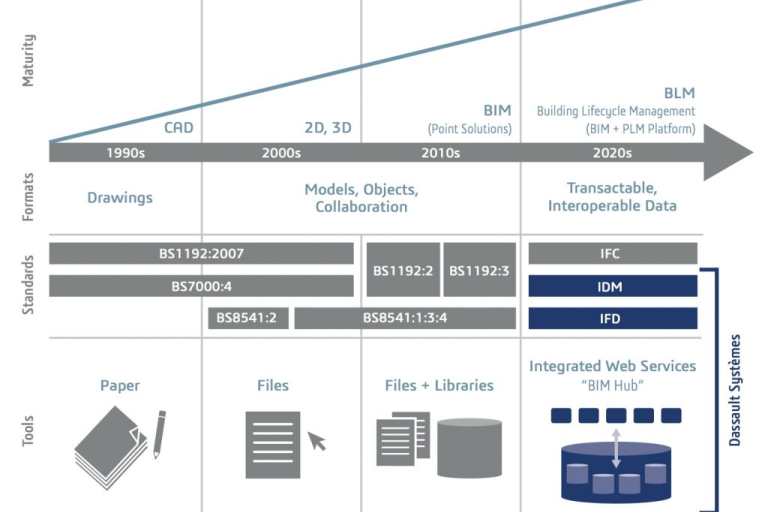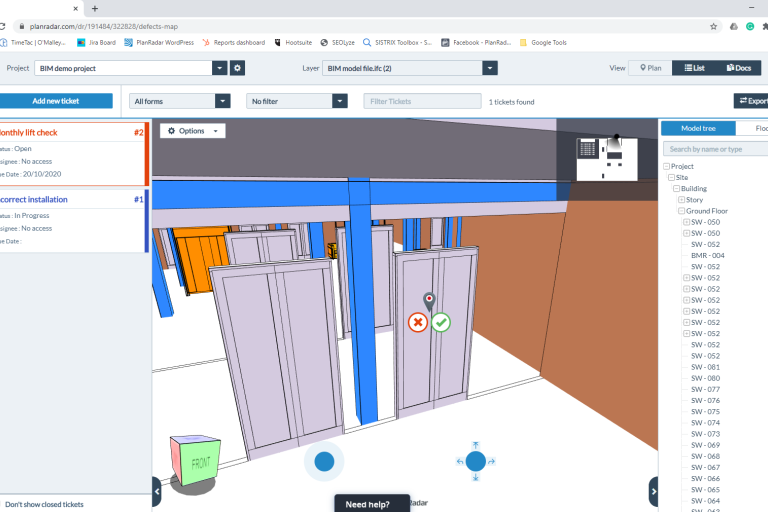In the world of construction and making buildings, something called BIM Level 2 is really important. It's a way of using computers to help with building projects, and it can make things work better and save money.
But, it can also be kind of tricky to understand and do it the right way. In this guide, we will explain what BIM Level 2 is in an easy way and show you how to do it right. Whether you're a pro or just starting out, this guide will help you follow the rules and succeed in construction today.
What is BIM Level 2?
On April 4, 2016, the government made it a rule that all construction projects must follow BIM standards at Level 2. BIM Level 2 tells us how and when to create, share, and handle information. The government wanted all projects to use smart, data-filled objects in a controlled 3D BIM setting.
The goal was for everyone involved in a project to merge their BIM standards and design data. They would work together and exchange information using a shared data space.
There are seven main benefits to adopting Level 2 BIM:

Advantages of BIM Level 2
Moving to BIM Level 2 (or even Level 3) can be really good for the construction industry. Here are some of the advantages:
More Productivity: Sharing information quickly and easily can make work more productive. When people collaborate, it's faster to add and change information. This means you get work done faster, spend less money, and plan projects better.
Handling Lots of Data: BIM helps manage big data. This will change how many professionals in construction work, like technicians and companies.
New Opportunities for Smaller Markets: BIM can make construction better. This might open up new markets that didn't have the right tools before. With a shared model, they can tackle problems they face daily.
Better Buildings: More data and better ways to use it mean better buildings. Complex buildings will be designed and built with more benefits for people. Things like the environment and modernization will be easier to consider during construction.
Finding Errors: BIM helps find mistakes in the design and construction of buildings. It's called "clash detection." BIM can find these problems and make projects more efficient.
Saving Time: In Level 2, you save time because of things like using a shared data space and collaboration tools. These make work smoother and information moves faster.
Saving Materials and Money: Fewer changes, better error finding, and smarter asset management save money.
Safety Boost: BIM Level 2 improves safety throughout a project's life. 3D models help with training and safety planning. It also reduces work-related accidents.
Using Resources Better: BIM models and methods help everyone understand project choices. This leads to a higher-quality final product. Visualizations in 3D and 4D help create a better environment and satisfy client needs.
In short, following BIM Level 2 can make construction projects more efficient, cost-effective, and safe while delivering better-quality buildings.

BIM Level 2: What's Expected to Be Delivered
In BIM Level 2, the stuff you need to give (called deliverables) should come from a big model that's like a mix of models from different fields (such as BIM LOD - Level of Development for structure, plumbing, and design). This model has to be checked for issues using a clash detection method to find any problems or conflicts.
Here's a list of what you need to deliver and do for BIM Level 2:
Essential Parts for Meeting BIM Level 2 Requirements
PAS 1192-2:2013 and the Common Data Environment (CDE)
This document is about the construction phase (the part when you spend money). It tells us what we need to do to reach Level 2 BIM, explains how we work together, uses the rules from BS 1192, and makes the common data environment (CDE) more useful.
The CDE is where all your design and construction information is kept. It's like a big storage place for everything related to the project. Everyone involved in the project can access it, which helps us work together better. In Level 2 BIM, it suggests having someone in charge of this data environment called an information manager. This person sets up and takes care of the CDE.
Employer’s Information Requirements (EIR)
The EIR is an important paper in the BIM process. It's described in PAS1192-2 as a document that comes before the project starts. It tells the supplier what information they need to provide and the rules they must follow during the project. The EIR has three parts:
Technical: It talks about the software and data formats to use, like the CDE.
Management: This part covers standards, coordination, finding problems, security, and more.
Commercial: It's about when to give data, what project info to provide, and so on.
BIM Execution Plan (BEP)
This document is really important for big construction projects. It tells everyone on the project team what they need to do and what they can expect from others. The BEP should have details like how to make and handle data in the BIM files, a plan for important project stuff, a timeline for key project events, and how things should be done.

Introducing Harmony Advanced Technologies: Your BIM/CIM Modeling Experts!
🌍 With over 20 years of global experience, we're the go-to experts for all your BIM Level 2 needs.
🏗️ Whether you're in construction, infrastructure, or any industry, we've got you covered with top-notch BIM/ CIM modeling services.
🚀 Why Choose Us?
✅ Decades of Proven Expertise
✅ Precise and Efficient Modeling
✅ Tailored Solutions for Your Projects
Ready to experience the Harmony difference? Contact us here and let's bring your vision to life!
Categories





